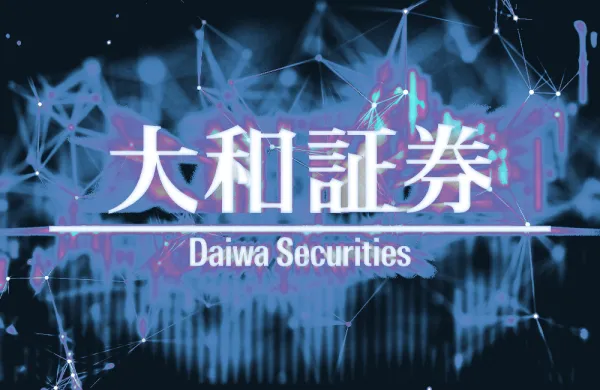To view this report as a PDf click here
The smart money is still betting on the Philippines. Almost 5 years after President Benigno Aquino took office and unleashed a whirlwind of economic reforms, including an anti-corruption drive and increased spending on public infrastructure, there are high hopes that the Philippines will remain one of the rising stars of Asia.
For 2015, Standard Chartered Bank forecasts GDP growth of 6 percent on the back of rising private consumption, a pick up in employment and falling oil prices. That would make the Philippines one of the standout performers in the region after China, which is expected to grow at close to 7 percent. Unemployment, currently at 6 percent, has already dropped by 2 percent since the beginning of 2010. “We expect underemployment, which is prevalent in regions where the agricultural sector dominates, to drop as the economy shifts more towards manufacturing and services,” notes Jeff Ng, an economist at Standard Chartered Bank in Singapore.
Standard Chartered is far from being the only bull on the Philippines.
Christopher Wood, chief equity strategist at CLSA believes that the Philippines remains for now the best macro story in the region. CLSA’s economics team is forecasting real GDP growth this year of 6.7 percent amid continuing evidence of a private sector-led investment cycle and a remarkable performance by the export sector, which continues to outperform the rest of ASEAN.
One key factor in the Philippines’ resurgence has been the sharp improvement in the country’s fiscal position as a result of better budgetary management. This has been accompanied by a sharp reduction in the cost of servicing both its domestic and external debt. According to PK Basu, ASEAN economist at Macquarie Securities, public debt at the end of 2014 fell below 50 percent of GDP for the first time in more than 30 years. That compares to a peak of 90 percent of GDP in 2003. “With the current account in surplus for the past decade, the external balance has been strong, reducing the need to issue external debt,” he says. “We expect the major global rating agencies to further upgrade the Philippines’ sovereign rating this year and next.”
The other good piece of news is that remittances from Filipino overseas workers, which account for around 8 percent of the country’s GDP, are likely to continue to rise in line with GDP. With nearly half of remittances coming from the US, Michael Spenser, chief economist at Deutsche Bank, believes this source of support for the peso should be sustained through 2015-2016.
Growth in FDI
Increased confidence in the Philippines has been reflected in the rapid increase in foreign direct investment. For the 12 months to November 2014, FDI inflows surged to US$5.8 billion from US$3.7 billion at the end of 2013, up 55 percent year-on-year. “This sharp increase is consistent with our long-held view of increasing investment-led growth, driven by the Aquino administration’s reforms, which have put the economy on a higher growth path and earned it credit rating upgrades,” says Euben Paracuelles, Southeast Asia economist at Nomura in Singapore.
The upward trend in FDI looks set to continue. Despite the recent influx of foreign money, Paracuelles sees room for further inflows as a result of last year’s liberalization of the domestic banking sector, comprehensive plans by the government to support the country’s manufacturing base, and expectations that Congress could potentially approve legislative changes on foreign ownership limits.
One of the most obvious signs of the recent boom is the changing skyline in the capital Manila. New office high-rises are mushrooming as developers scramble to meet demand from global firms who are looking to outsource business processes to the Philippines. Developers added 466,350 square meters of office space last year, according to Colliers International Philippines. A further 510,000 square meters of office space is slated for completion annually in Metro Manila between 2015 and 2018.
Some analysts worry about a looming glut in the property market in Manila, especially if conditions in the world economy continue to deteriorate. Last year, the Central Bank recommended that from late 2016 onwards, banks should be obliged to lower their loan-to-value ratios from 80 percent to 60 percent for mortgages. The central bank has already implemented real estate stress tests and is monitoring shadow-banking activities in the real estate sector. But Wood at CLSA points out that land values in the Makati Central Business District remain in real terms 55 percent below their peak levels in 1997, meaning that the market has yet to reach the speculative heights of previous boom-bust cycles.
Nor is property the only sector that is booming. In March 2013, the Philippines signalled its entry into the lucrative international gaming market with the opening of the US$1.2 billion Solaire Resort and Casino in Manila’s Entertainment City, a smaller version of the Las Vegas gaming strip. More recently, Melco Crown Entertainment inaugurated its City of Dreams casino-resort in Entertainment City. Despite the sharp slowdown of gaming revenues in Macau, there are still hopes that the combination of prosperous Filipinos and wealthy Chinese gamblers could drive this newly established market for high rollers.
Addressing Infrastructure Needs
Yet the government still faces plenty of challenges if it is to set the Philippines back on the path of long term sustainable growth. In a bid to solve the country’s notorious infrastructure bottlenecks, President Aquino last year pledged massive investment in new highways, power grids and airports as part of a Public-Private Partnership program (PPP). But despite the grand promises, progress has been slow. Paracuelles at Nomura is hopeful that the momentum will pick up later in the year. “Prospects for higher public infrastructure spending remain positive, which we expect to help crowd in more private investment spending,” he says. Not everyone is so upbeat. Lack of progress on the PPP Program has led some analysts to predict it may be only a matter of time before Manila’s traffic grinds to a virtual halt.
For their part, most foreign investors still seem willing to give the Philippines the benefit of the doubt. Last year, the stock market rose by nearly 20 percent, making it one of the best performers in the region. Fund managers who put money into Philippine equities when Aquino first took office back in June 2010 have done especially well with returns in excess of 100 percent. Yet the strong performance has meant that the market is now among the most expensive in Asia with a PE ratio of 18.7 compared with 14.9 in Thailand and 10.5 in Korea.
Despite the relatively demanding ratings, Andrew Stotz, CEO of A. Stotz Investment Research, remains positive on the Philippine equity story. “The fundamentals of companies in the Philippines are still very solid,” he says. “While the stock market is the most expensive in Asia, it is supported by growth and relatively low risk. I don’t see any imminent collapse.”
An even bigger question for many global investors is what happens when Benigno Aquino completes his six-year term in office in May 2016. In the past, changes of government in the Philippines have been notoriously messy affair--often accompanied by considerable backtracking on reform. Although this time around the jury is still out, many analysts remain convinced that the Philippines has changed fundamentally and that whoever takes over as President will continue to pursue policies that are pro-growth and pro-business.
Says Basu at Macquarie Securities. “We view the institutional reforms of the past decade and especially the past half-decade as largely irreversible.”
By Ben Davies





